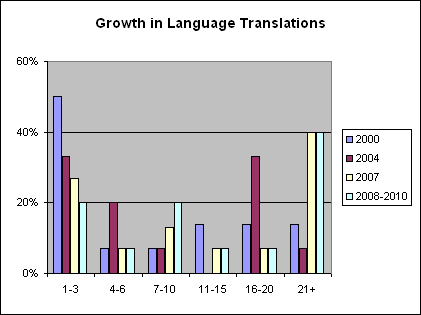Got quality?
Join Mary, Shannon Zimmerman from Sajan, and myself on Wednesday October 24th for a discussion of quality in the Global Information Age, in which mere information availability no longer suffices. Today’s customer expectations demand relevant information that is culturally acceptable, appealing, and most important, understood. Delivering contextual, multilingual information – communications that make sense in the customer’s language of choice – is fundamental.
Any company with a multinational revenue profile knows that fusing quality and translation is a significant part of the formula for success in a global economy. In and of itself however, the act of translation provides no “certificate of excellence” or “seal of approval” for its quality quotient. So, the obvious question is: What is quality translation and how will organizations know when they achieve it? What is a quality quotient?
Join the discussion as we offer our take on improving, maintaining, and measuring the quality quotient of information products for the Global Information Age. Register here.

